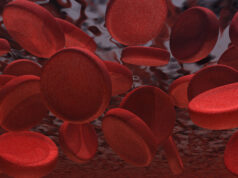Doctors are encouraged to consider therapies in addition to blood thinners to treat certain patients with potentially dangerous blood clots that form in the deep veins and travel to the lungs, according to a new scientific statement from the American Heart Association. The statement is published online in Circulation: Journal of the American Heart Association.
According to the American Heart Association, more than 250,000 people in the United States are hospitalised with deep vein thrombosis each year. Previously, there has been limited guidance for physicians on some of the more serious conditions caused by deep vein thrombosis.
The statement offers advice for cardiologists and a range of other physicians who treat the disorder. Guidance is provided for identifying and treating people with massive and submassive pulmonary embolism, iliofemoral deep vein thrombosis, and chronic thromboembolic pulmonary hypertension.
“It is important for doctors to be able to identify the severity of these disorders and to select who might be eligible for more invasive therapies, such as clot-busting drugs, catheter-based treatments or surgery,” said M Sean McMurtry, co-chair of statement writing group. “Venous thromboembolism is very common, and frequently a complication of other ailments. While most patients need blood thinners only, patients with more severe forms of venous thromboembolism may benefit from more aggressive treatments.”
The statement outlines multiple treatment options including the use of fibrinolytic, catheter-based interventions, treatment with surgery to remove the blood clots and use filters that prevent clots from traveling in the veins from the legs to the lungs, where they can cause strain on the heart. Additional guidance for treating paediatric patients is also included.









